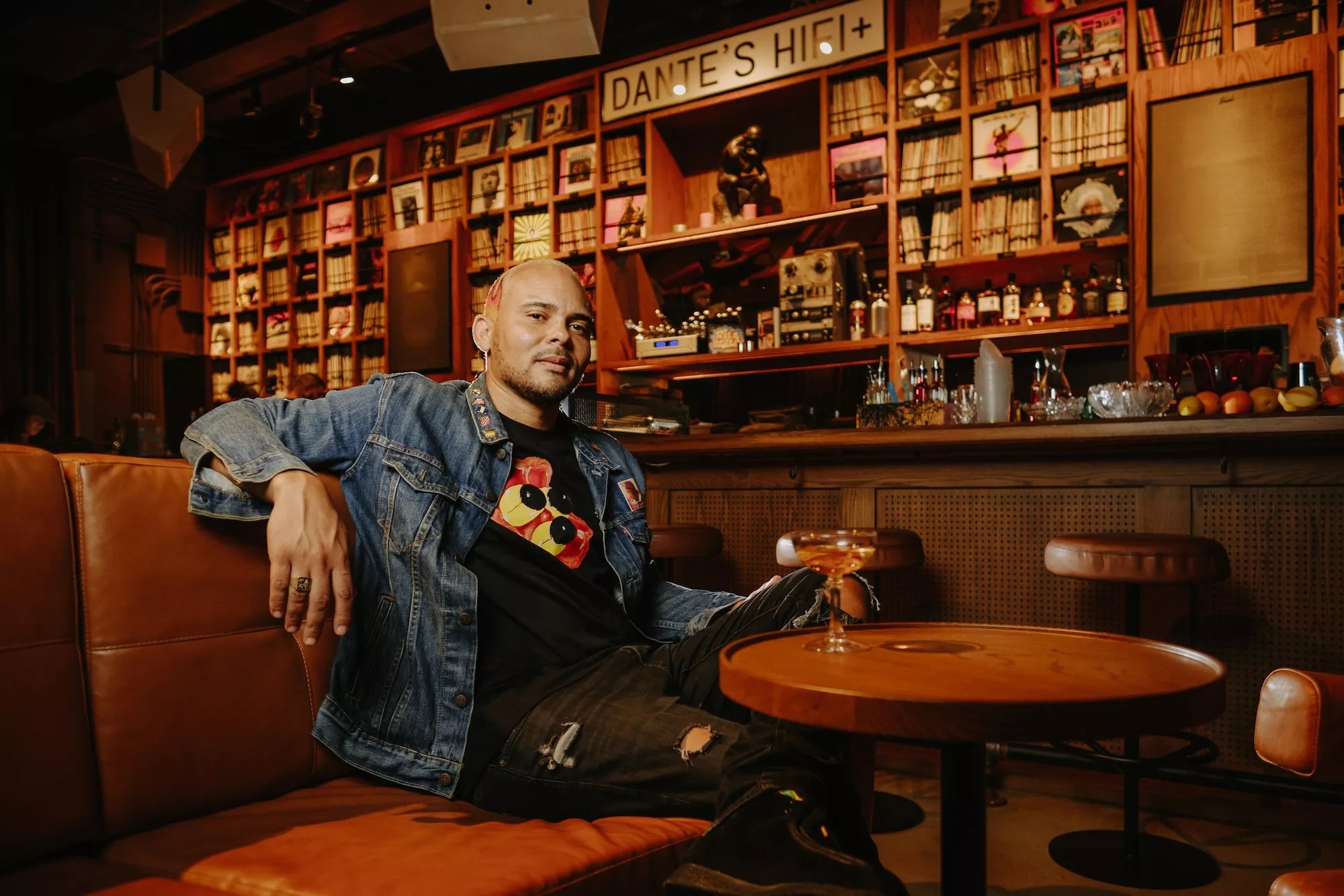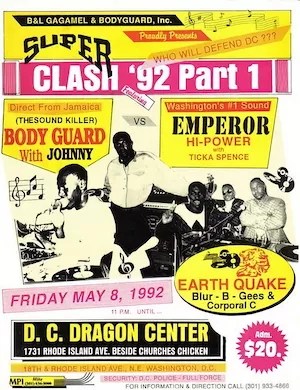
Photo by Chad Andreo

Audio By Carbonatix
From his early days in the Jamaican sound system Black Chiney to his current success in the popular EDM trio Major Lazer, Walshy Fire has skillfully blended music genres from South Florida and Jamaica for almost 30 years. The Grammy Award-winning music producer, DJ, MC, and entrepreneur will soon add “published author” to his list of accomplishments; Fire will release his first book, Art of Dancehall, on April 1.
Much of Walshy Fire’s musical influence stems from dancehall music, a rhythm-heavy genre of Jamaican pop music and a branch of reggae originating in the late 1970s. Inspiring the genre’s name, dancehalls serve as a hub for community and creativity, featuring DJs going head-to-head in sound system battles. Fire’s Art of Dancehall depicts the artistry used to capture the true spirit of dancehall, simultaneously drawing in new audiences and unknowingly chronicling these events for years to come.
“I think that a lot of artists are inspired by the artwork of Jamaica. You know, this artwork is handwritten. It’s a story being told that a lot of the time people don’t even understand how much sense it makes to the music,” Fire explains. “It’s so dead on, it’s so spot on to the music, and, you know, the two just live in such harmony. The artists are going to the parties, and they’re drawing what they’re actually seeing and the lifestyle that they’re actually seeing. It’s not two separate things. What makes this so influential is that anyone who’s been to a dancehall party sees the artwork and goes, ‘Wow, they nailed it!'”

Art of Dancehall features posters from Walshy Fire’s collection.
Rizzoli Universe
Miami, make your New Year’s Resolution Count!
We’re $14,500 away from reaching our $30,000 year-end fundraising goal. Your support could be what pushes us over the top. If our work has kept you informed, helped you understand a complex issue, or better connected you to your community, please consider making a contribution today.
Growing up an avid music lover, Walshy Fire attended dancehalls, where he kept the flyers as mementos of the events. Art of Dancehall began with Fire’s collection of dancehall posters and commentary, accompanied by fellow sound system fanatics Lee Major DeBoss, Sheldon “Muscle” Bruce, Mark Professor, and StranJah.
“I was looking through some old boxes and came across the box that I have with all the flyers in it. And that box, you know, it just made me sit there for like an hour, just going through the flyers and reliving a lot of the moments. I was like, ‘Man, if I feel this way when I see these flyers, then maybe someone else will feel this way too,'” Fire says. “So I started to begin my manifestation of having a book, and shortly after, as you know, with manifestations, I met an extremely awesome gentleman by the name of Shepard Fairey, who has a company called OBEY and is one of the most legendary graphic artists of all time. He had a book out with Rizzoli, and I told him my idea, and he loved it. He immediately puts me in contact with Rizzoli. Rizzoli loved the idea, and we get to working.”
Jamaican dancehall and its culture quickly spread internationally in the Eighties and into the Nineties, with hubs in the U.S., the U.K., Canada, and Japan. With the movement of dancehall to new audiences and technological advancements came a new set of genre conventions for dancehall flyers. Where the original dancehall flyers featured bright colors and sketches, other dancehall offshoots began incorporating gradients, Xerox machines, and collaging techniques.

Walshy Fire is also releasing a dancehall-focused album along with the book.
Rizzoli Universe
“How amazing it must have felt to live in a non-digital world at all, where every single aspect of something was communicated through its ability to have a person who really cared and was of the culture be a part of however it was presented,” he says. “We can always talk about the artists doing things out of survival, and that’s why you have so much DIY, but it really comes down to when the later digital graphics came in, were they even into it?”
Fire’s passion for dancehall and sound system culture truly shines through. His expertise provides details that enrich the lively artworks within the book. In tandem with the release of Art of Dancehall, Fire will also release a dancehall-focused solo project of the same name, serving as a follow-up to his 2019 album Abeng.
“You know, almost every flyer that you’re going to see in this book is two DJs battling with dubplates and going crazy with huge sound systems. This isn’t like stage shows. This is a totally different thing, and that’s why the culture is just so unique, because where else in the world are they doing that, were they doing that? Nowhere,” Fire says. “Nowhere else in the world was it more important to clash and have your sound system be the top sound system with the top DJs in the world. Everyone else in the world was kind of playing nice, and in Jamaica, there was nothing nice, man. You had to be the top dog; you had to earn it.”
Art of Dancehall. By Walshy Fire. Rizzoli Universe. 224 pages. Hardcover; $50.